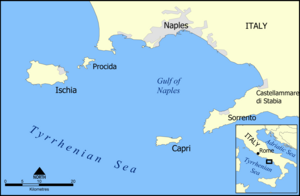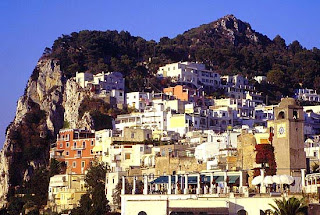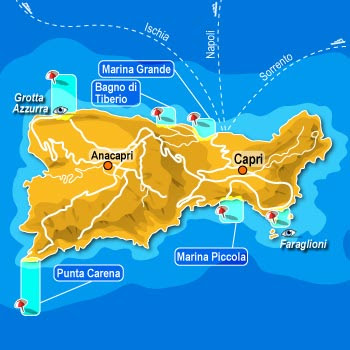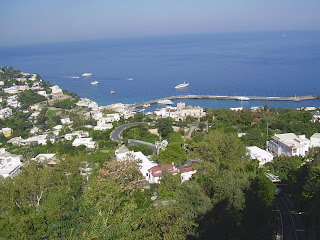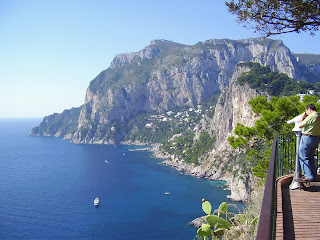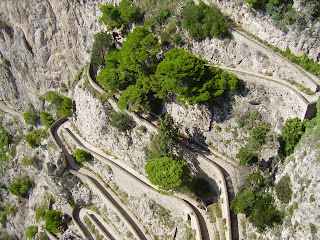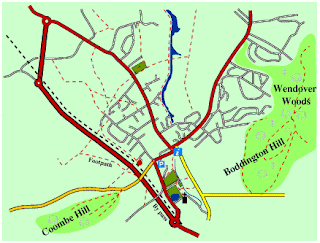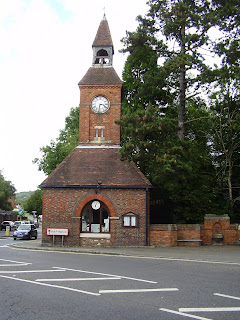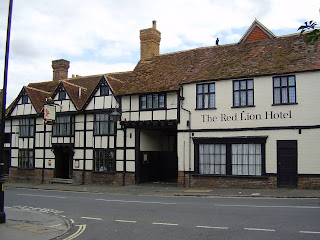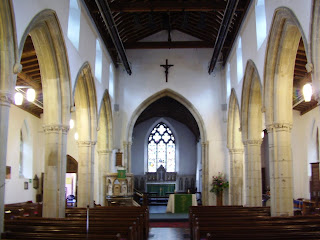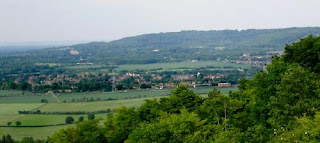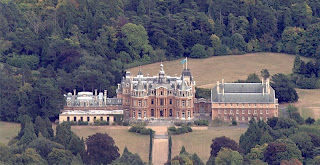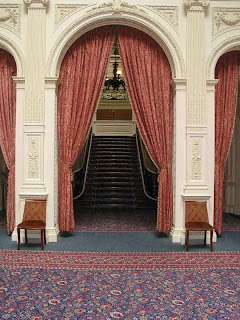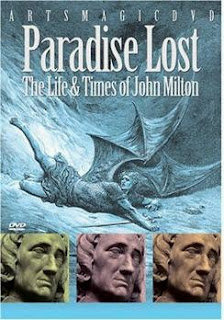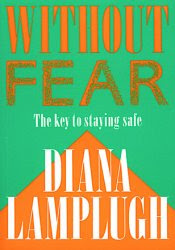Portrayal Of Obama As Elitist Hailed As Step Forward For African Americans
From the Independent Newspaper, London, 29th August 2008.
PA Report.
The American Dream is alive and the nation can be better than it has been during the last eight years of President George Bush, Barack Obama said as he accepted the Democratic Party's presidential nomination. Delivering the most important speech of his life to more than 80,000 people at an open-air stadium in Denver, Colorado, Mr Obama left no doubt America was ready for change and said it was time for voters to stand up and say: "Eight is enough!"
"I get it," he said. "I realise that I am not the likeliest candidates for this office. I don't fit the typical pedigree, and I haven't spent my career in the halls of Washington. But I stand before you tonight because all across America something is stirring. What the nay-sayers don't understand is that this election has never been about me. It's about you." Mr Obama confronted every criticism made by Mr McCain and the Republicans of his campaign and the Democrats head-on, from his ego and rock star status to his lack of foreign policy experience and his tax policies.
"If John McCain wants to have a debate about who has the temperament, and judgment, to serve as the next commander-in-chief, that's a debate I'm ready to have," Mr Obama declared, referring to his rival's notorious temper and criticism of his own lack of experience. "America, we are better than these last eight years," he said. "We are a better country than this." Mr Obama, who made history on Wednesday as the first African American US presidential nominee of a major party, said: "This moment - this election - is our chance to keep, in the 21st century, the American promise alive." The 47-year-old Illinois senator said his Republican rival John McCain, a former Vietnam prisoner of war, had "voted with George Bush 90 per cent of the time".
"I don't know about you, but I'm not ready to take a 10 per cent chance on change," he said. Mr Obama, whose keynote address at the party's 2004 convention shot him to fame, gave his 44-minute acceptance speech last night 45 years to the day after Martin Luther King Jr inspired the world with his "I Have a Dream" speech.
"America, we cannot turn back," he said.
The final day of the convention was moved outside to the Invesco Field stadium in a bid to show his candidacy extends beyond the politicians who have dominated the convention so far. Ten supporters, including some who donated only $5 (£2.72), were invited to join Mr Obama backstage beforehand and watched his speech from the front row. At the end of a convention dominated by the issue of unity between Mr Obama and his former rival Hillary Clinton, the Democrat received the loudest applause when he embraced the idea of coming together.
"The times are too serious, the stakes are too high for this same partisan playbook," he said. "The men and women who serve in our battlefields may be Democrats and Republicans and Independents, but they have fought together and bled together and some died together under the same proud flag. They have not served a Red America or a Blue America - they have served the United States of America." Mr Obama said America needed to restore its "sense of higher purpose" and "the promise of a democracy where we can find the strength and grace to bridge divides and unite in common effort."
The Democrat also confronted the McCain campaign's accusations over his ego and celebrity status. He said his grandmother Sarah in Kenya had worked hard so that he could have a better life and "poured everything she had into me. I don't know what kind of lives John McCain thinks that celebrities lead, but this has been mine," he said. Striving to dismiss criticisms that his lofty, inspirational campaign consisted of empty rhetoric, he set out "exactly what change would mean if I am president".
He pledged to cut taxes for 95 per cent of all working families, end US dependence on oil from the Middle East within 10 years and create jobs for Americans. America's troubled economy and its national security were his central focus. He said he had "made clear we must take out Osama bin Laden and his lieutenants if we have them in our sights" and added: "John McCain likes to say that he'll follow bin Laden to the Gates of Hell - but he won't even go to the cave where he lives." Mr Obama went on: "As commander-in-chief I will never hesitate to defend this nation, but I will only send our troops into harm's way with a clear mission and a sacred commitment to give them the equipment they need in battle and the care and benefits they deserve when they come home." He offered details of his plans for energy and education, health and the climate crisis and pre-empted criticism he was a liberal who believed in "spend, spend, spend. I've laid out how I'll pay for every dime - by closing corporate loopholes and tax havens that don't help America grow," he said. Mr Obama added that America's failure to respond to its challenges were "a direct result of a broken politics in Washington and the failed policies of George W Bush".
It was time for Republicans to "own their failure", he said. "It's time for us to change America. And that's why I'm running for President of the United States." Fireworks erupted over the stadium as Mr Obama was joined by his wife Michelle and daughters Malia, 10, and Sasha, seven, at the end of his speech. A bid to get most of those packed into the stadium to form the world's largest phone bank - text-messaging thousands more to boost voter registration for November's general election - also underscored how the Obama campaign has harnessed modern technology to garner support in what polls indicate will be a close race between Mr Obama and Mr McCain for a place in history as the 44th president of the United States. At the end of a convention dominated by the issue of unity between Mr Obama and his former rival Hillary Clinton, the Democrat received the loudest applause when he embraced that theme.

He said some critics dismissed such suggestions as "happy talk", but he said that when rivals did not have any fresh ideas, they "use stale tactics to scare the voters. If you don't have a record to run on, then you paint your opponent as someone people should run from," he said. "You make a big election about small things." Mr Obama used his speech to confront every criticism made by Mr McCain and the Republicans of his campaign and the Democrats.
"These are my heroes. Theirs are the stories that shaped me. And it is on their behalf that I intend to win this election and keep our promise alive as President of the United States." He also described his former rival Hillary Clinton as "a champion for working Americans and an inspiration to my daughters and to yours". He even echoed Mrs Clinton's passionate speech on Tuesday night when he said: "I stand before you tonight because all across America something is stirring. What the nay-sayers don't understand is that this election has never been about me. It's about you."
Striving to dismiss criticisms that his lofty, inspirational campaign consisted of empty rhetoric, he set out "exactly what change would mean if I am president". America's troubled economy and its national security were his central focus, with pledges to cut taxes for 95 per cent of all working families, end US dependence on oil from the Middle East within 10 years and create jobs for Americans. "We are the party of Roosevelt. We are the party of Kennedy. So don't tell me that Democrats won't defend this country. Don't tell me that Democrats won't keep us safe. As commander-in-chief I will never hesitate to defend this nation, but I will only send our troops into harm's way with a clear mission and a sacred commitment to give them the equipment they need in battle and the care and benefits they deserve when they come home."
He also detailed his plans on energy and education, health and the climate crisis. Mr Obama then pre-empted criticism he was a liberal who believed in "spend, spend, spend". "I've laid out how I'll pay for every dime - by closing corporate loopholes and tax havens that don't help America grow," he said. Mr Obama added that America's failure to respond to its challenges were "a direct result of a broken politics in Washington and the failed policies of George W Bush".
It was time for Republicans to "own their failure", he said. "It's time for us to change America. And that's why I'm running for President of the United States."

